

Designation:Veritech Valkyrie (VF-1A, -1B, -1D, -1E, -1F, -1J, -1S, Armored, Super, VT-1, VE-1, Jotun) |

|
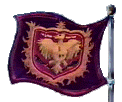
|
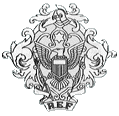
|
||
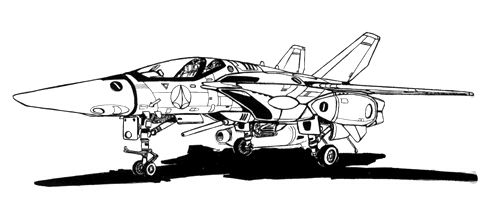
|
|||||
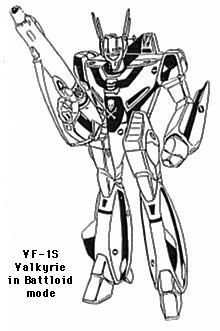
| Fighter mode | Guardian mode | Battloid mode | |
|---|---|---|---|
| Length : | 14.2 meter | 11.0 meter | - |
| Depth : | - | - | 4.0 meter |
| Height : | 3.8 meter | 8.7 meter | 12.7 meter |
| Breadth : | - | 7.3 meter | 7.3 meter |
| Wingspan : | 8.3-14.8 meter | 8.3-14.8 meter | 4.7-14.8 meter |
| Dry Weight : | 13.3 metric tons. |
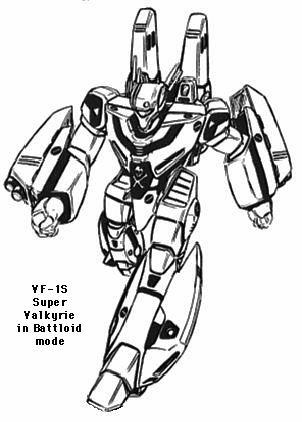
| Fighter mode | Guardian mode | Battloid mode | |
|---|---|---|---|
| Length : | 14.0 meter | 11.3 meter | - |
| Depth : | - | - | 5.0 meter |
| Height : | 5.0 meter | 10.8 meter | 15.4 meter |
| Breadth : | - | 8.6 meter | 8.6 meter |
| Wingspan : | 8.3-14.8 meter | 8.3-14.8 meter | 4.7-14.8 meter |
| Dry Weight : | 19.2 metric tons. |
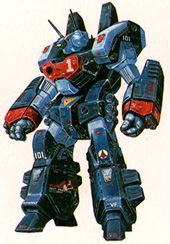
| Battloid mode | |
|---|---|
| Height : | 14.1 meter |
| Depth : | 4.8 meter |
| Breadth : | 9.8 meter |
| Operational Weight : | 37.1 metric tons. |
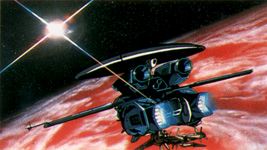
| Fighter mode | Guardian mode | Battloid mode | |
|---|---|---|---|
| Length : | 14.0 meter | 11.3 meter | - |
| Depth : | - | - | 5.0 meter |
| Height : | 6.3 meter | 11.7 meter | 16.7 meter |
| Breadth : | - | 9.1 meter | 9.1 meter |
| (antenna) | 11.2 meter | 11.2 meter | 11.2 meter |
| Wingspan : | 8.3-14.8 meter | 8.3-14.8 meter | 4.7-14.8 meter |
| Dry Weight : | 22.5 metric tons. |
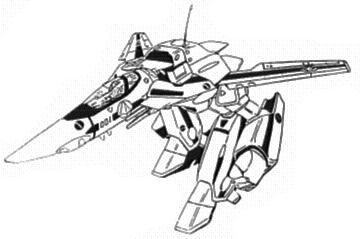
Note: The Super Valkyrie configuration is extremely unmaneuverable in an Earth-like atmosphere, and is thus almost exclusively used in extra-atmospheric operations. Hence, atmospheric performance data for fighter mode is not listed.
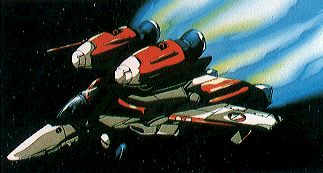
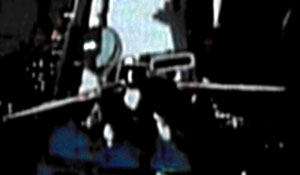
NOTE: Various sensor systems like Inverted Synthetic Aperture Radar, high-definition cameras, radiation sensors, motion scanners et cetera may be pod-mounted on the wing and center body hardpoints.
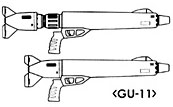
NOTE: The centerline hardpoint is actually a retractable grip that extends from the Valkyrie's upper right forearm, just below the elbow actuator. In fighter mode, the grip is on the craft's centerline.
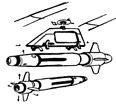

NOTE: The hardpoints can also carry recon and cargo pods and other weapons than the above. The hardpoints are on pivots, and can adjust as the Valkyrie's wings swing forward or back. Loads held close to the wing (such as the triple AMM-1 MER) do not interfere with the Battloid-mode transformation. However, larger loads require the Valkyrie to keep its wings extended as it switches to Battloid.
NOTE: Some Valkyries were modified to carry up to eighteen AMM-1 medium-range missiles on each tail for a total of thirty-six missiles in addition to those under the wings. These missiles had to be fired and their support racks ejected before Guardian- or Battloid-mode transformation was possible. This option was considered hazardous to friendly aircraft, and was only made available under strict firing guidelines. Even then, only the most skilled pilots were allowed to carry this arsenal. In addition, though in principle the vernier systems could compensate for the loss of the use of the tail by these racks, no atmospheric use of these additional missiles was ever recorded.
| Center Back | ||||||
|---|---|---|---|---|---|---|
| Craft | Right Leg | Right Arm | Right Back | Left Back | Left Arm | Left Leg |
| Super VF-1 (A,B,J,S) | NP-FB-01 | NP-AR-01 | NP-BP-01R HMMP-02 |
NP-BP-01L HMMP-02 |
NP-AR-01 | NP-FB-01 |
| Strike VF-1(A,B,J,S) | NP-FB-01 | NP-AR-01 | NP-BP-01R Rö-X24 |
NP-BP-01L HMMP-02 |
NP-AR-01 | NP-FB-01 |
| Super VF-1D, Super VT-1 | NP-FB-T1 | NP-AU-T1 | NP-BP-T1R | NP-BP-T1L | NP-AU-T1 | NP-FB-T1 |
| VF-1E (typical) | APS-201 | |||||
| VF-1E (max) | NR-FS-E3 | NR-SR-E3 | APS-201 | NR-SL-E3 | NR-FS-E3 | |
| Super VF-1E, VE-1 | NR-FS-E3 | NR-SR-E3 | NR-NP-E3R | NR-NP-E3L | NR-SL-E3 | NR-FS-E3 |
| APS-201 | ||||||
| VF-1F | NP-FB-01 | NP-AR-01 | AEP-210 | AMMP-01 | NP-AR-01 | NP-FB-01 |
| Armor VF-1 | -----------------------GBP-1S----------------------- | |||||
| Jotun (Prototype) | NP-FB-01 | NP-AR-02X | NP-BP-01C HMMP-02 |
NP-AR-02X | NP-FB-01 | |
| GBP-2X | ||||||
The armor of the standard Valkyrie is composed of an advanced titanium-steel alloy. The armor stops all small arms fire, provides good protection against heavier infantry weapons, such as a 12.7mm machinegun round, and fair resistance to light mecha-mounted weaponry, such as the Zentraedi 22.3mm HE autocannon round.
The additional armor on the reinforced sections of the Super Valkyrie stops all small arms and heavy infantry weapons fire, provides good resistance to light mecha-mounted weaponry, such as the Zentraedi 22.3mm HE autocannon round, and poor resistance to medium mecha-mounted weaponry, such as the Valkyrie's 55mm APFSDS round.
The additional armor on the Armored Valkyrie is composed of a standard Chobam laminar developed in the late 20th century and improved with the materials science advances made during the Robotech era. This armor was mainly designed to defeat projectiles and other kinetic weapons. The armor stops all small arms, heavy infantry weapons fire, and light mecha-mounted weaponry, and provides fair to good resistance to medium mecha-mounted weaponry, such as the Valkyrie's 55mm APFSDS round.
The Valkyrie provides full protection from nuclear, biological, and chemical hazards, using an overpressure cockpit environment activated by radiation and hazardous chemical sensors, or manually when biological warfare conditions are anticipated. The internal consumables supplies can provide atmosphere for two days maximum.
No mecha is as well known and admired by friend and enemy alike as the Valkyrie Veritech. It was the first mecha incorporating reconfiguring components that made it a transformable craft. It was also the fastest and most versatile of all UNDF mecha that fought in the First Robotech war.
The story of the Valkyrie begins in 2004. After 5 years of study, the UNDF Robotech Research Group led by Dr. Lang was capable of creating Earth mecha of sufficient power to counter the mecha utilized by the Zentraedi, as found in the SDF-1. However, the ground mecha that were being developed were not as fast as the Zentraedi mecha, and the fighters under development were of course not capable of ground combat. But because the Battle Pods were known to have such a great mobility, a fast mecha was necessary to counter incursions by these (the existence of the Zentraedi Power Armor designs was unknown at this early date). For a while the research group considered an assault helicopter mecha (that would ultimately evolve into the Southern Cross' AGACS two decades later), but Dr. Lang eventually came up with the mechamorphosis concept which promised a far better speed since it could be incorporated into a jet fighter.
The Valkyrie would need a jet fighter form, to execute its main objective (air combat) and a humanoid form to give maximum mobility and versatility on the ground. Dr. Lang also incorporated an intermediate form to ease the conversion from airborne to ground mecha, and this GERWALK mode (later called Guardian) proved to be such a useful merger of the Fighter and Battloid characteristics that it was also used for high-mobility work near the ground, and not just for VTOL landings. The result was in full scale production a full year before the SDF-1's launch date.
The original contractors for this craft were a consortium of Teledyne Continental, Rockwell, and Bell. The standard variant of this craft was the VF-1A, which sported a single laser on the head, and was produced by all three manufacturers. Under license, Nakajima Heavy Industries, one of the manufacturers of the FF-2001 engine for the aircraft, soon began to produce the VF-1J, which used an upgraded head, designed by Kyuusei industries, which added a second laser; the "J" designation denoting Japanese manufacture. This variant was used by flight and squadron leaders. Licensee Northrop also began to produce, in limited numbers, a 'special' Valkyrie, the VF-1S. With a new head-unit with four lasers, and substantially improved avionics and engines, this aircraft was issued only to commanders air group (CAGs). A conversion two-seat trainer, the VF-1D, with a new two-laser head and a slightly modified fuselage (the airbrake was deleted) was also produced. It was fully combat-capable, and often was pressed into service in the war. The Valkyrie was also produced in some numbers by the factories on board the SDF-1 during its long journey in interplanetary space. In early 2009, a new dedicated trainer, known as the VT-1, was developed. The VT-1 was very similar to the VF-1D, but there were subtle changes. Firstly, its -1A derived head was modified to carry a dish-shaped retractable sensor pallet in the place of the single Mauser laser. In addition, the VT-1 sported small blisters on the wingtips that contained improved vernier thrusters. Finally, the instructor, who sat at the same height as the student pilot in the VF-1D, was elevated approximately 30 centimeters. This caused a redesigned canopy and some minor changes to the fuselage. After the Holocaust, the Valkyrie remained in production as the premier combat mecha of the Earth forces, although its production had been nationalized and shifted to what factories remained on Earth and the moon, until it was replaced on the production lines by the Lightning and Alpha Veritech fighters. In 2014, new manufacture of the VF-1A and -1J stopped in favor of the VF-1B, which was basically a VF-1A with the head of a VF-1S and slightly improved avionics over the -1A, though the new package was still inferior to that in the expensive VF-1S. At about the same time, the control interface of all Valkyries was completely redesigned. In earlier models, the main Fighter/Guardian mode controls included a center control stick, a throttle, and a stick to control fine movement for each arm in Guardian mode on the main control panel. This redundancy was eliminated, and the two sticks (now to either side of the pilot) controlled both the plane (in Fighter and Guardian modes), and the arms (in Guardian mode). In addition, the ejection seat was replaced by a new model, better suited for space maneuvering in case of a bail-out outside the atmosphere.
The superbly-armed Super variants of the Valkyrie were developed by the SDF research groups in response to field experience with the standard models, namely the specialized needs of a space-dedicated fighter with heavier weapons packages to defeat an opposing force that possessed vast numerical superiority. Super variants could be converted from standard versions in minutes, if the standard Valkyrie had the necessary connection ports. Most existing Valkyries were retrofitted with such connections, and after 2011, all new VF-1s had them built in. The Super version's main distinction is the use of ejectable additional armor around the legs and arms, and the mounting of two FAST fuel and booster packs on the plane's back. In the front of the pods was room for weapons (save those specifically designed to be used on trainers, which included extra fuel). Typically, two multi-missile pods were mounted, though the Strike mission version saw a particle beam in the starboard pod and the standard sixteen-round short range missile pod in the port one. The Super Valkyrie also had the necessary electronics to carry six nuclear missiles, specifically developed for use against the gigantic Zentraedi warships. Every Super variant (with the exception of the trainer and Elint versions) carried an additional three Starburst missiles in the forearm armor. However, these space-optimized fighters were hardly ever used in the atmosphere where their external pods would hinder their aerodynamic properties.
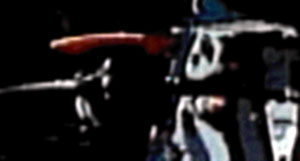
The later VF-1E version was created by the SDF-1's engineers when the standard Cat's Eye recon plane was found to be too deficient in combat survivability to fully fulfill its role as Elint/AEW aircraft in the more hostile environs. Derived by combining the head of a VF-1A and the cockpit of a VF-1D, a major avionics upgrade, and attaching a rotary radome dish to the fuselage, the Elint first saw service in the battle against Dolza's armada. The VF-1E performed its mission flawlessly in both atmospheric and space conditions, though it could carry less electronics than the Cat's Eye. Eventually, the need for a Super VF-1E was seen, and soon the VF-1D's FAST packs were modified to accommodate the main dish and additional sensors. Eventually, the VF-1E was supplemented by the unarmed VE-1, which was a similar aircraft, only derived from the Super VT-1. Because of the replacement of the -1A head with an new laserless version, the VE-1 could no longer claim to be particularly robust in the heat of battle, though the overall integration of the sensory systems was far better than that even on the Super VF-1E.
The VF-1F Wild Weasel SAM and Radar Suppression Aircraft was a design considered as the United Earth Government began to fragment. Though few of this aircraft, derived from the VF-1D, were produced in full, it became an option available for all Valkyries with the Super connections, and consisted of a non-laser equipped head and specialized cockpit, both loaded with special defense suppression electronics and extra sensors, along with specialized sensor and missile pack for the FAST pack hardpoints. The normal head and cockpit of a Valkyrie would be disconnected, the new cockpit and head installed, the back pods added and the VF-1F was ready. The Wild Weasel version was created to clear anti-aircraft forces out of the way of an incoming air strike. The VF-1F was one of the first mecha to be replaced by the Shadow Fighters, because of their far greater survivability in most theaters of engagement. An early retirement of the VF-1F concept had seemed inevitable, but for the exceptionally successful missions flown against the EBSIS' formidable air-defense network by Captain Thomas J. Austin and his weapons officer, Lt. Sanjay Mathani.
An additional option for the standard Valkyrie was the use of an external armor/missile system. These craft, known as Armored Valkyries, carried twice the armor and seventy additional short range missiles, but mobility was decreased immensely, and transformations were not possible until the armor was jettisoned. This concept was developed to further increase the versatility of the VF-1, turning it in minutes into a Destroid. However, since the 'raison d'tre' of the Veritech was mobility, and due to the Destroids' own successes, this configuration was not used very often.
The Valkyrie saw service with the RDF Air Force, Navy, Marines, and Spacy until these branches were disbanded, and with the Armies of the Southern Cross' Navy in a second-line capacity from its creation in 2020 until 2026. The VF-1E and VE-1 survived longer in the REF, serving until replaced by the VF-6R/VE-12A combined ELINT Legioss in the mid-2030s.
Go to Valkyrie Image Gallery.
Addendum: Valkyrie Orbital Booster Pack |
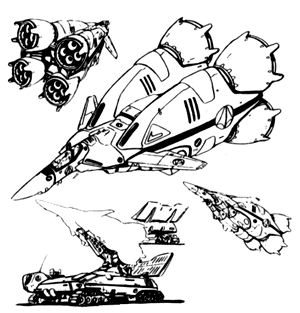
|
| Total Length: | 13.6m |
| Total Width: | 4.2m |
| Total Height: | 9.1m |
| Weight: | 24.5 metric tons (dry, stand-alone) |
| 161.2 metric tons (fueled, with Valkyrie attached). |
The skin of the Valkyrie booster is composed of an advanced titanium-steel alloy. The skin stops all small arms fire, provides fair protection against heavier infantry weapons, such as a 12.7mm machinegun round, and poor resistance to light mecha-mounted weaponry, such as the Zentraedi 22.3mm HE autocannon round.
While the VF-1 Valkyrie was, by itself, capable of reaching low Earth orbit, it could do so only by exhausting nearly all its own reaction mass. As there was a need for the Valkyries to be able to transport themselves into a higher orbit (the ARMD platforms rarely descended to such low an orbit that an unaided Valkyrie could rendez-vous with them) an orbital booster was developed that gave the Valkyrie the capability to ascend as high as a geostationary orbit.
The booster took the form of a large attachment to the rear of the Valkyrie, with four large engine housings, each of which contained four small fusion engines. The engines drew their power from the Valkyrie's own protoculture power systems. These engines would serve as reaction engines during take-off, then revert to ramjet mode until a speed of Mach 3 was reached, convert to a scramjet configuration, and then slowly reconvert to a reaction engine as the vehicle left the atmosphere. This mode of operation meant that the atmosphere provided a large part of the reaction mass required by the vehicle. For the atmospheric stages, the upper engines used inlets on top of the boosters, while the lower engines were fed through the Valkyries own fusion turbines in stationary mode. Attitude control was by the Valkyrie's thrusters and by vectored exhaust, and by two vernier thrusters built into the booster's lower sides. As the Valkyrie needed to convert into a partial Guardian configuration in order to mount the booster, and because the weight was concentrated to the rear, the vehicle could not use a runway. Instead, a tracked launch platform was developed which launched the craft from a rail. After detachment from the Valkyrie, the booster could be recovered by shuttle and reused.
The booster was never meant for combat launches, only for ferry flights. As such it saw much service in the UNDF during the reconstruction years, when a dearth of cargo shuttles made the booster the most economic manner of ferrying a Valkyrie to the orbiting Zentraedi and Terran vessels.
Addendum: Jotun Ultra Valkyrie Prototype |
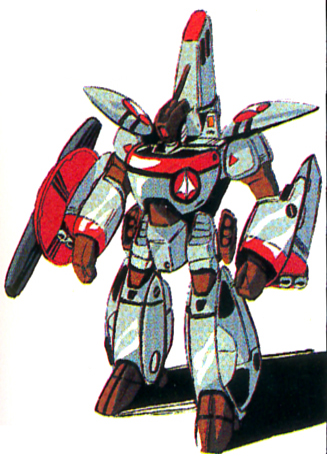
|
One of the more interesting variants that was developed, but little used, for the Valkyrie was known as the "Jotun Valkyrie". This modular attachment package design combined the motivating design paramaters for the older Armored Valkyrie with components first fitted on the Super Valkyrie, as an attempt to create a more heavily armored Battloid with most of the mobility advantages of the Super Valkyrie's boosters and its retained transformation capability.
The best-known version of the Jotun Valkyrie consisted of several stock or slightly modified Super parts: NP-FB-01 fuel and thruster packs for the legs, a single NP-BP-01C/HMMP-02 thruster/missile launcher combination in the center back, attached through a special armored structural plate (see below), and the NP-AR-02X, a slightly modified version of the Super Valkyrie's arm augmentation hardware, each capable of carrying a fourth Starbust missile over the NP-AR-01's three.
In addition to the Super components, the Jotun Valkyrie included two heavily armored exterior plates for the torso. The forward torso plate consisted of armor every bit as thick as that on the Tomahawk Destroid, and protected the Jotun Valkyrie from attacks to the front. This forward armor was to allow the mecha to act in a forward heavy battle mecha capacity. The rear armor plate was lighter, and mainly served, as mentioned above, to attach the thruster pod to the centerline of the back in such a way as distribute the loads it produced away from the relatively fragile tail section backpack it straddled. Additional armor plates were mounted atop the shoulders, to protect the mecha from missiles launched from above. Finally, two three-tube Starburst missile launchers were added to the hips, attached on swivelling mounts to the counter-vernier thrusters.
The missile load of the Jotun Valkyrie was slightly smaller than that of the Super Valkyrie. The loss of the second HMMP-02 was partially made up for by the addition of the hip launchers and the modified forearm launchers. Still, the Jotun Valkyrie sported only 30 Starbursts to the Super Valkyrie's 38, though at the time of design, it was thought that the additional armor would compensate for the loss of ammunition.
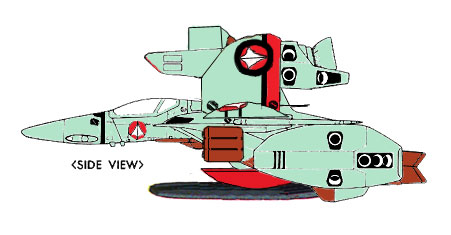
Unlike the Armored Valkyrie, the Jotun Valkyrie was designed to be able to transform without impacting its weapons load. The transformed mecha had only about 58% of the maximum thrust (and only about 65% of the thrust:weight ratio) of the Super Valkyrie, but because of the limited fuel storage in the booster pod compared to the leg tanks, almost 90% of the delta-v. Moreover, its thrust was thought to be more controllable by the average pilot than the extraordinary power of the Super Valkyrie. As with the Super Valkyrie, the Jotun Valkyrie was capable of ejecting all its external modules, leaving it in the standard Valkyrie configuration.
The most interesting component of the Jotun Valkyrie was its new gun-pod. Attached to a shield-shaped capacitor, this weapon dwarfed the GU-11 and is similar to the PBC-11 of the Tomahawk destroid in yield and capacity.
The Jotun Valkyrie underwent development almost immediately after the introduction of the Super Valkyrie, in 2011. Most of the RDF's production facilities had been geared toward Valkyries at this point, and the shortage of new Destroids to defend the ship was beginning to be felt. It was thought that the Jotun Valkyrie would overcome the shortcomings of the Armored Valkyrie with its increased mission flexibility, and could serve to help fill the dwindling ranks of the Destroid defense contingent as a highly-mobile point-defender. At the same time, it was thought that the Jotun would make an excellent compromise between armor and acceleration, which might make it more useful than the Super Valkyrie on certain types of missions.
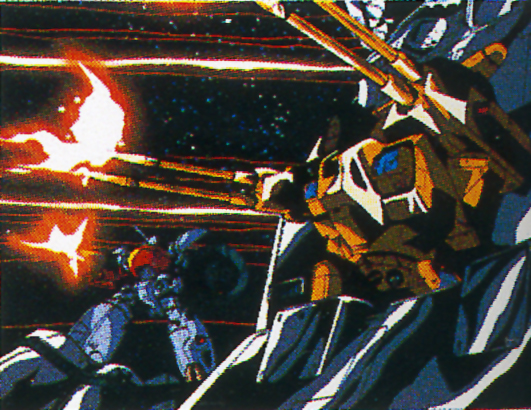
By the time of the arrival of Dolza's fleet over Earth, five sets of the Jotun armor were built, and the mecha were employed in the defense of that ship in the battle. Four of the five were lost in action. After the Holocaust, the design languished, as mecha designs lost priority to the reconstruction effort for the next couple of years. No development on the mecha was seen, and the final prototype was destroyed in action defending the SDF-1 against Khyron's ship in the minutes before the two vessels collided, in January 2014.
The development of the VF-4 signalled the death of the Jotun Valkyrie project. With Super Valkyries already in service, with the brand-new Strike Valkyrie offering equivalent cannon armament on an otherwise off-the-shelf package, the value of additional armor still under debate, and a replacement mecha already in the testing phases, the Jotun Valkyrie program was cancelled and almost forgotten.
The Jotun Valkyrie was unknown to modern historians until researchers at the Jason Smith Institute for Mecha Studies, in the process of archiving the gun camera footage from mecha in the First Robotech War, discovered old footage of two Jotun Valkyries in action, one in the great battle, and one defending the SDF-1, taken from other Destroids on the hull of the great ship. This led them to search files buried in the EVE computer archives, whereupon they discovered memos related to the mecha augmentation package's development. A special-effects reconstruction of this gun camera footage was seen by the public in "Robotech", a teen-oriented historical drama airing on holovision beginning in 2055. Though some veterans of the Sentinels Wars have commented that this mecha closely resembles one used by the native Perytonian surface dwellers, and have speculated that the mecha's appearance in the footage of "Robotech" as an inside joke, it is quite clear that the resemblances are superficial, and that the Jotun Valkyrie not only has nothing to do with the Perytonian mecha in question, but it is indeed an authentic piece of the histories of the First Robotech War.
Return to UNDF Veritech Index.
Go to Robotech Reference Guide Home Page.
Robotech (R) is the property of Harmony Gold. This document is in no way intended to infringe upon their rights.
Content by Pieter Thomassen, Peter Walker and Robert Morgenstern